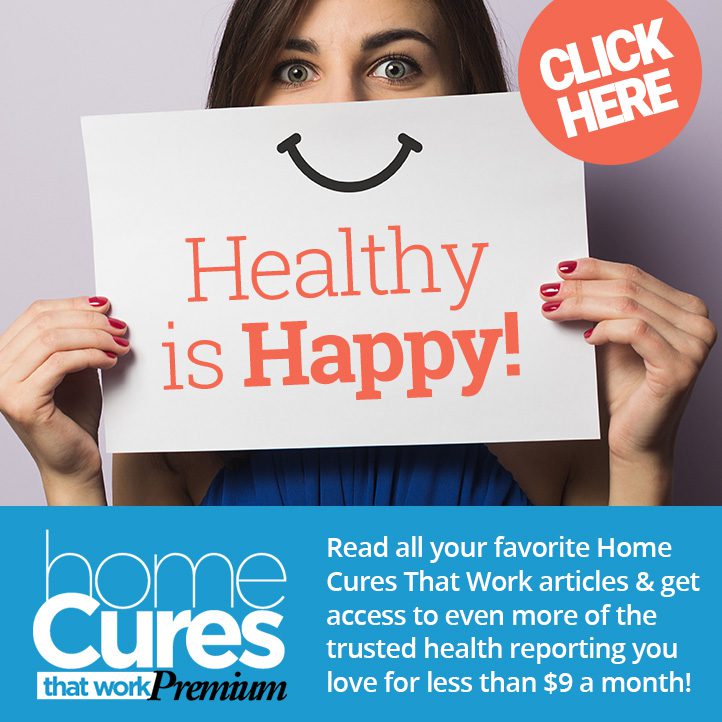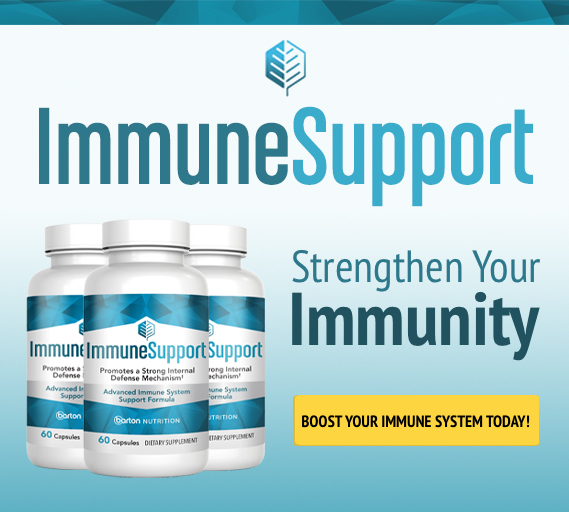Revolutionary New Approach to Cancer Treatment
“Pancreatic cancer is the best thing that ever happened to me!” Sitting at the kitchen table in the home of Dr. Bob to sign papers for the purchase of his practice, his exclamation gave me a start. He had my full attention. I looked up with the obvious question on my face and he went on. “I was given three months to live, but I’ve managed to stretch it out for two years with IV vitamins, and other natural treatments. In these last two years I have been able to visit friends in South America, repair a relationship with my daughter, make sure my wife is taken care of, and now I am tying up the last loose end – I think you will take good care of my patients.” He died two weeks later.
Cancer has been a big topic of conversation since the beginning of time. It has always been associated with death. I have seen many patients die of cancer in the past thirty years of being a doctor, including my best friend.
Eddy called me one day twenty years ago to tell me he had been diagnosed with lymphoma in the brain. I immediately got on a plane and flew to his house and researched all the possible treatments. Then we went to his oncologist the next day and asked her about each one. She had never heard of them. I asked what she had available. She said, “MOPP therapy.” MOPP is an acronym for Mustargen (nitrogen mustard), Oncovin (Vincristine), Procarbazine, and Prednisone. I was quite surprised, because that treatment had been around for decades, and known to cause cancer.[1] I was also surprised that she didn’t know about any of the alternatives such as IV vitamin C, Vitamin D, guided imagery, fasting, and so forth. Eddy did the MOPP treatment, several years later had a bone marrow transplant, lost all his hair, gradually wasted away. He died as expected.
The problem with cancer treatment is that nobody is keeping statistics. If you had cancer and your oncologist recommended a treatment, you might ask how well the treatment works. But the problem is, nobody knows. There are no statistics kept. It seems to work… about 20% of the time. This is how every cancer treatment purports to work. Statistically, there is going to be about 20% remission rate, no matter what treatment is used. The alternative clinics point to their 20% who get better to prove that it works, while the conventional clinics do the same.
Spontaneous remissions are much more common than previously thought. It has been thought that it was very rare. However, when actual research is done it is much greater. In one study on breast cancer in Norway, they found that advanced breast cancer actually resolved by itself 22% of the time.[2] Spontaneous remission of malignant melanoma has also been estimated to be around 20%.[3] One small study in biopsy-proven kidney cancer the spontaneous remission rate was 6.6%.[4] This is why any therapy for cancer seems to work about 20% of the time.
Just to emphasize the matter, if you look at cancer death rates, they do not change with treatments. As new treatments come out, the latest and greatest is supposed to be better than the old treatments! But the overall death rates do not change with ANY treatments.
Cancer Screening Increases Treatment Problems
Women who have mammograms are misdiagnosed with cancer 30% more than those who don’t. When they don’t have cancer, the problem is being told they do AND they get treated for a cancer they don’t have, increasing their mortality. Indeed, a meta-analysis shows that women who treated with radiation and chemotherapy for breast cancer have a higher mortality than those who are not treated. Much of this comes from treatments causing new cancers.[5] They don’t die of breast cancer; they die from the effects of toxic treatments. Thus, the Institute of Medicine has said that most “breast cancer survivors” are really just chemotherapy survivors.[6] Your oncologist will say the treatment “worked” not knowing you didn’t have cancer in the first place.
Colon cancer has the same issue. If we look at mortality in those screened by any means, vs. those not screened we see no difference at all.[7] Looking at the following graph, notice that all three lines follow the same pattern:
You can see that they follow the same curve – no matter what screening or what treatment is used. The best way to evaluate cancer treatment is to look for “ALL CAUSE MORTALITY.” The people who are marketing treatments avoid showing this by just looking at deaths from “colon cancer.” This makes it appear as if the other causes of death are not important. Those who have colon cancer, but die from a heart attack, for example, would not be included, assuming that the treatment for colon cancer doesn’t cause heart attacks or does not contribute to death, when it actually does.
Many of the treatments for cancer have never undergone placebo-controlled studies. When they do, it is often found that the placebo works better, such as in the melanoma study cited above. One study on the use of placebos found that they worked better than the treatments in a meta-analysis of multiple studies.[8] So, are the treatments just placebos? Probably. But they do damage, making them worse than a placebo.
As noted above, solid tumors such as colon, breast, pancreatic and lung cancers show no value in conventional treatment – the treated group does not differ from the untreated group. However, there are certain cancers that are treatable with standard chemotherapy drugs, such as testicular cancer, Hodgkin’s Disease, and ALL (Acute Lymphocytic Leukemia). There is no way to have a single type of treatment for all cancers.
Natural Cancer Treatment
For many years I treated cancer with intravenous nutrients. I used glutathione, vitamin C, and other herbs, vitamins, minerals and diets. I did see some amazing results, but they were very inconsistent. One woman was especially interesting.
Eileen was a 73-year-old tough smoker who still worked in downtown LA as a parole officer for adolescent offenders. She came to us with an 8-centimeter mass in her lungs. When the oncologist in Pasadena told her she had three months to live she looked him straight in the eye and said, “There’s no expiration date stamped on my ass, and you’re not going to put one there!” She walked out and found our clinic. We started IV vitamin C, but after three months the tumor had not changed. We then added IV glutathione after the vitamin C and the subsequent CT scan showed that the tumor had shrunk to 4 centimeters – about half the size. She continued to drive from Pasadena to Santa Barbara every week for treatments. She also continued to work with “her boys” in LA. Since the IV took a couple of hours she would sit there knitting hats for the homeless people downtown.
After about two years, she complained of headaches and was found to have several tumors in her brain – a common place for lung cancer to metastasize. We continued the IV treatments, but she died about three months later.
I think there are two issues to consider. The first is that she lived much longer than expected. She continued to smoke, and work in her very stressful job; she loved her work, and she loved her “kids.” The second is that the treatment she got allowed her to continue to work and live a normal life. She was not debilitated by the treatment. Like Dr. Bob, her last years were joyful, and not miserable, like Eddy.
In 1976 Linus Pauling reported that 22% of a hundred cancer patients treated with intravenous (IV) vitamin C survived for more than one year compared to only 0.4% of control patients.[9] A clinical trial in Japan independently showed a similar result.[10] Subsequent studies on vitamin C and cancer showed no difference, but the patients were given very small doses of oral vitamin C, instead of large intravenous doses. It’s important to look at how the studies are done.
Despite mildly improved survival time, and better quality of life, the fact remains that any of these individual treatments do not cure cancer. There must be a better way to remove the cancer from the body.
The Old Way to Treat Cancer
Previous treatments have centered on the genetics of cancer. Chemotherapy, radiation, and IV vitamin C only work on fast-dividing cells by destroying the DNA that is needed to make a new cell. Those that are currently in the process of replicating their DNA will be killed, but all the rest (the majority) are unaffected by the toxins. Thus, these treatments can shrink tumors, but can never kill all the cells in a cancer mass. Moreover, they don’t touch the cancer stem cells that wait there to start growing later, in some other tissue. And when the cancer returns it is resistant to the treatments that seemed to help the first time. There are spontaneous remissions, as with any treatment, but no survival benefit.
A big issue with standard treatments is the inability to deal with cancer stem cells. Each radiation treatment causes cancer stem cells, which may become a new cancer in five to ten years. Thus, it is common for those treated for cancer to die of a different cancer a few years later. Since they didn’t die from the one that received the treatments, they are considered “cured.” We have no way of knowing if any treatment actually works because no statistics are kept for our current treatments.
Thus, up to now, our treatments for cancer have been dismal. The reason for this is because they all center around the treatment. Everyone is trying to find “the cure for cancer,” as if there were one thing that would get rid of all cancers. You go to one clinic to get one treatment, and another to get a different treatment. Dr. Burzinski does his treatments, and only his treatments, and has a remission rate about equal to everyone else, even though it is a different treatment.[11] If you go to Mexico, you can get treatments that are banned in the United States, but they don’t have the statistics to show a remission rate greater than 20%. If you go to the local oncologist, she doesn’t know anything about any other treatments, just MOPP! If you go to a radiation oncologist, you get burned – in more ways than one! The old paradigm of “one size fits all” is dead. Literally. There must be a better way.
A New Cancer Treatment Paradigm
Having seen so many failures of cancer therapy, I have had a pessimistic attitude about cancer treatment. I have told people, “It doesn’t matter what you do, there is a 20% chance of overcoming cancer, as if to say, “there is no value in treatment.” However, having done more research, I feel differently now. I think there are things that can be done to increase life. I don’t think it’s hopeless, nor do I think there is only one way to handle it.
The two ways that don’t seem to work is:
- Putting all your eggs in one basket. Thinking that one thing can cure or heal, and nothing else would work. Many put all their trust in one person, one treatment, or one doctor or clinic.
- Doing everything you hear about. So many people freak out and just do everything they can. A friend tells them about some strange treatment with oil and cottage cheese that seemed to work for someone else is immediately adopted as if it will bring a cure.
Looking At All the Cancer Treatment Options
It seems like adding treatments together may be of greater benefit. Dr. Bob did multiple different things for pancreatic cancer and lived longer and better. Eileen did not get better with just IV vitamin C, but improved dramatically when glutathione was added. My friend, Eddy, went with the standard of care and got exactly what was expected.
The current research is now going in a different direction than in the past. The failure to affect any change in cancer mortality has spawned a new treatment paradigm. It turns out that treating cancer as a metabolic problem, instead of a genetic problem, has many advantages. The genetic treatments can only affect the active tumor, whereas the new treatments can remove the cancer stem cells as well. Moreover, the metabolism of cancer can be targeted at many different levels.
Dr. Paul Merik has written a book[12] that summarizes much of the research on alternative cancer treatments. In it, he makes recommendations based on what the current research shows. I’m going to include his list here for your interest:
These have a strong recommendation
- Ketogenic diet
- Exercise
- Sleep
- Vitamin D
- Melatonin
- Green tea
- Metformin
- Curcumin (turmeric)
- Mebendazole (anti-fungal)
- Omega 3 oil
- Berberine
- Atorvastatin
- Disulfiram
- Cimetidine
- Mistletoe
- Sildenafil/Tadalafil
The following have a weak recommendation.
- Low-dose Naltrexone
- Doxycycline
- Wheatgrass
The following have no specific recommendations
- Resveratrol
- Aspirin/Diclofenac
- Nigella sativa
- Reishi mushrooms
- Ivermectin
- Dipyridamole
- High-dose IV vitamin C
- Dichloroacetate
- Cannabis
- Fenofibrate
- Pao Pereira
The following are NOT recommended
- Laetrile
- Shark cartilage
These recommendations are not specific for types of cancer. Also, this list doesn’t take into account the synergistic effects of using certain substances together. Just going through the previous list and taking everything recommended may not be of any benefit. Some of those with no specific recommendations may be just what you need for your cancer, and others may hurt your chances. This also doesn’t look at other alternatives, such as fasting.
Fasting As a Cancer Treatment
There is now good evidence that fasting is not just something that could be included in cancer treatment but must be. It is a key part of any treatment that is chosen.[13] Dr. Valter Longo at USC in Los Angeles has shown that fasting during chemotherapy not only helps the chemotherapy to work three times better, but it also prevents toxicity to normal cells. People who fast for 48 hours before a chemo treatment and continue for 24 hours after have much better results. They also do not get nausea, vomiting, diarrhea or acute toxicity. But more importantly, they don’t lose their hair or lose weight.[14] Fasting is a key to treatment for several reasons:
- It induces immunity against cancer
- It causes autophagy (where the body “eats” the cancer)
- It puts normal cells to sleep so they don’t get toxic when getting toxic therapies. Remember, the toxic therapies only kill dividing cells. After about 48 hours of fasting, the normal cells stop dividing, and only cancer cells continue to grow. This includes chemotherapy, radiation, and IV vitamin C
- It limits the available nutrients for cancer to grow
- It stops the growth hormones (mTOR, insulin, IGF-1, incretins, anabolic steroids) that promote cancer cell growth
Thus, fasting protects normal cells, and makes cancer cells more susceptible to treatment. It is the perfect adjunct to treat all forms of cancer. However, the caveat is that it must be used carefully, and be applied specifically for each type of cancer, and each patient. Just fasting for long periods may cause a lot of weight loss without destroying the cancer, as Jane McLelland explains.
In her book, How to Starve Cancer… Without Starving Yourself [15], Jane McLelland takes us through her journey with cancer, and her subsequent research to find out the metabolism of cancer, or what tumors need to grow. She found that cancers are not all the same, and some things that would destroy one cancer might help another to grow. For example, a ketogenic diet could stop breast cancer, but may cause prostate cancer to grow. That’s why there is no single treatment for all cancers. Moreover, she found that there are some herbs, repurposed drugs, and vitamins that act synergistically. Even though any one of them may not help by itself, together they can be the “magic bullet” that removes cancer stem cells. Each cancer may require a different set of treatments. What she has discovered is that it will take a combination of treatments to cure many types of cancer.
Intelligent Cancer Treatment
Therefore, I would like to propose a more reasonable and intelligent way to treat cancer. Rather than having a cancer clinic that focuses on a specific treatment, there are now oncologists that know and use all the possibilities. They can look at cancer types in specific patients and recommend a treatment regimen that would best fit that patient. Intelligent cancer treatment is specific to the patient, instead of the treatment. Rather than focusing on a single treatment, conventional or alternative, the new way can treat cancer from multiple angles. But, how do you know which to choose?
This new way requires intelligence because it will be different for each patient. The oncologist must study each patient, find out what the individual has, look at the metabolism, and how to block it. The lifestyle, hormones, genes, stressors, and metabolism of the person who has cancer must be taken into account. This can be done with ANY type of cancer, making every type of cancer potentially “curable.”
The point is to change our whole way of thinking about cancer treatment. Rather than just throwing things at it, create an intelligent plan based on what is known. It is amazing how much is known about all the different types of cancer. A little research can go a long way. When the best treatments don’t work, the oncologist will intelligently make changes to improve the outcome using the following rules:
- Treat the whole cancer, using both the treatments that kill the growing cells, and those that kill stem cells.
- Block the metabolism of the cancer – don’t give it what it needs to grow. This is done with diet, herbs, and repurposed drugs.
- Kill the growing cells. This may include IV vitamin C, fasting, and/or chemotherapy drugs.
- Avoid making new cancer stem cells. Use radiation judiciously, if at all. If radiation is used, it should be with IV vitamin C, fasting, and repurposed drugs to block the stem cell formation or growth.
- Be specific to your type of cancer. Cancers that use fat for energy should not have a ketogenic diet. Those that are slow-growing will have a different metabolism than those that are fast-growing.
- Change the treatment as needed for the metabolic type. Using one cocktail for a time can slow the growth, and once weakened, a different treatment can be used to remove it.
- Use all the tools that are available. Many people short-change themselves by limiting treatments to “only natural alternatives” or “only conventional.” Broaden the scope of possibilities and look at everything out there as a tool. Some are not the right tools for your treatment, just use the ones that are.
Eddy’s oncologist only knew one thing, and it didn’t help. Both Dr. Bob and Eileen used multiple treatments and had better results. Jane McLelland used all of them and continues to live a normal life. As you change your way of looking at cancer treatment, it is essential to broaden your scope of possibilities. It would be best to work with an oncologist who is familiar with all the options and knows the metabolism of your particular type of cancer, or even knows how to test you and your specific cancer. I believe these principles will radically alter both cancer treatment and mortality in the future. We will see more than 20% remission – it will be cured in most cases.























